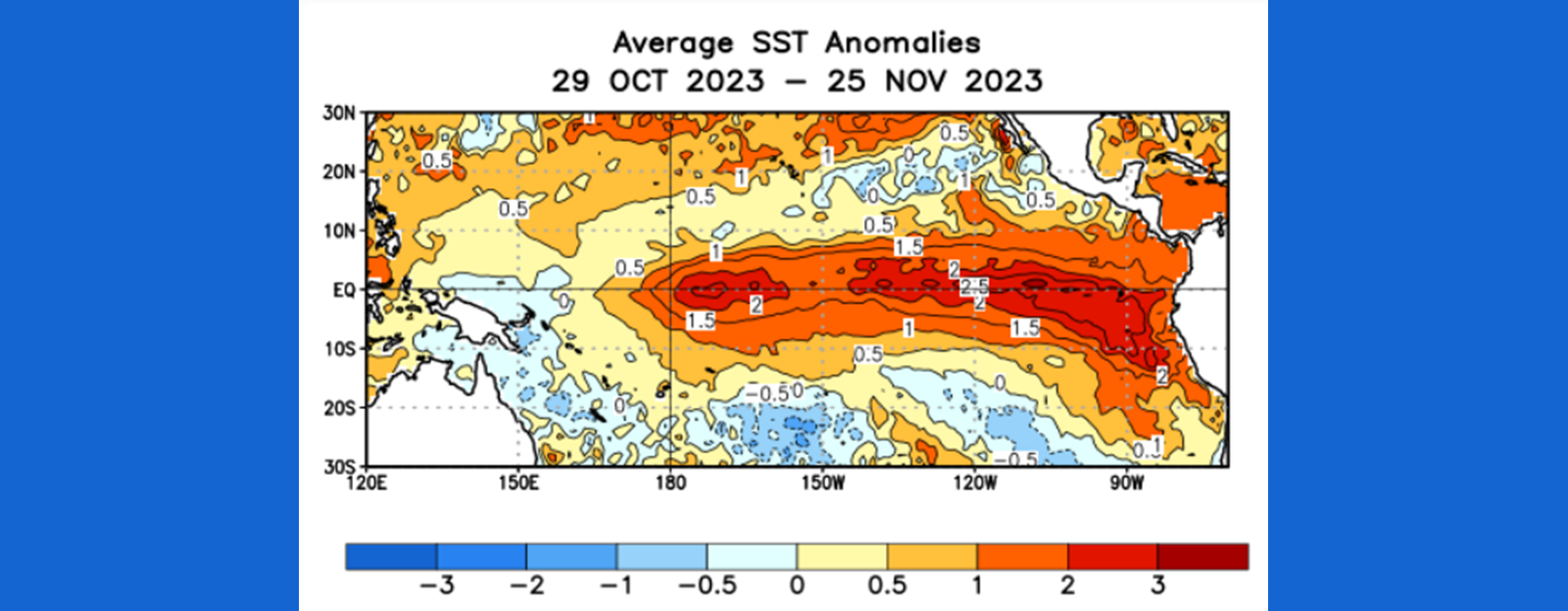Following three consecutive years of La Niña, the El Niño-Southern Oscillation (ENSO) is currently in the El Niño phase, according to NOAA.
The ongoing El Niño is forecast to be an intense event, reaching its maximum intensity in late 2023 and persisting through early 2024, according to the official August 2023 NOAA ENSO Forecast. Should it be as predicted, it can provide cool, wet conditions for the US and allow the average US corn and soybean yields to improve. Typically, while corn and soybeans improve during an El Niño event, global wheat yields tend to fall.
Argentina's soybean yields also tend to rise, as it is usually drier in the northern part of South America. El Niño can also delay the monsoon rains in South America and have those same rains end sooner.
After a dry 2023, the 2024 season is expected to be cooler. However, data within the 89-year Gleissberg Solar Drought Cycle suggests that dry and hot conditions could return in 2025 if Mother Nature is to repeat as it did back in the 1930s.
The Gleissberg Solar Drought Cycle (not to be confused with the similar predictive powers of the Benner Cycle) describes an amplitude modulation of solar cycles with a period of about 70–100 years, or seven or eight solar cycles. With solar activity on a recent upswing and expected to peak in 2025, the invigorated solar cycle would align with the Gleissberg Solar Drought Cycle.
Predictions for 2024
Even if the Gleissberg Solar Drought Cycle wasn’t predicting it, we are predicting more of the same for 2024.
Unless demand returns for US corn exports, a slight drop in yields may not matter as ending stocks remain above two billion bushels.
Russia, as the largest global producer and exporter of wheat, needs to have a production hiccup in 2024 to create fear and a spike in wheat prices.
If there isn’t a production hiccup, then it could be more of the same as 2023, with its tumultuous markets.
Potential back-to-back record South American corn and soybean crops will anchor grain prices in 2024, keeping costs down.
With higher crude oil prices and OPEC refusing to increase production, higher diesel fuel prices will prevent inflation from falling to two percent anytime soon, and higher interest rates could stay elevated for longer than most expect.
Image Credit: NOAA
Related Articles
- Precision Technology for Fertilizer Mixing & Blending Precision agriculture is everywhere, even in fertilizer mixing and blending systems, where automated systems and software-based systems are quickly becoming a crucial element to the industry. (Sponsored Content) N...
- Canadian Foodgrains Bank and Viterra fighting against hunger Canadian Foodgrains Bank, together with Viterra and its volunteer farmers, marks the eighth year of their joint efforts to tackle global hunger, utilizing farmland across Saskatchewan and Alberta. As reported on F...
- Will South American crops survive? Even with the flag of Brazil covered in soybeans, the dryness experienced within the Amazon rainforest is having a negative affect on the country’s corn and soy yield. By Colin McNaughton, Farms.com Risk Managemen...
- Perception gaps exist between farmers and consumers Research by Nutrien identifies key differences and similarities in agricultural views between farmers and North American consumers. In recent research by Nutrien Ltd, "Bridging the Agricultural Perception Divide,"...
- 18 action steps for farmer aid proposed by CFA Canadian agriculture is at a crossroads with rising operational costs and regulatory challenges threatening the industry's financial and mental health. The Canadian Federation of Agriculture (CFA) has identified 1...
 How to resolve AdBlock issue?
How to resolve AdBlock issue? 


Join the discussion...
You must be logged in as a CAAR member to comment.
Report
My comments